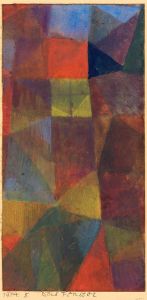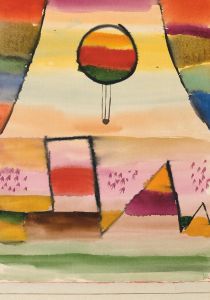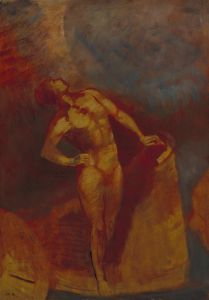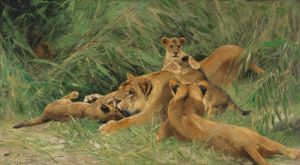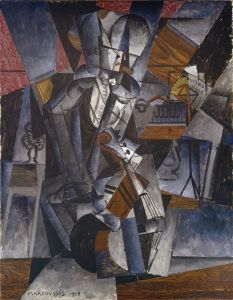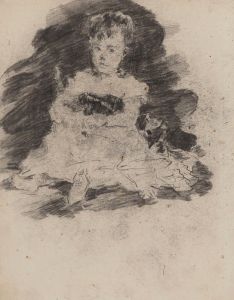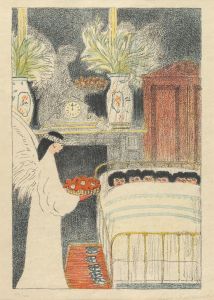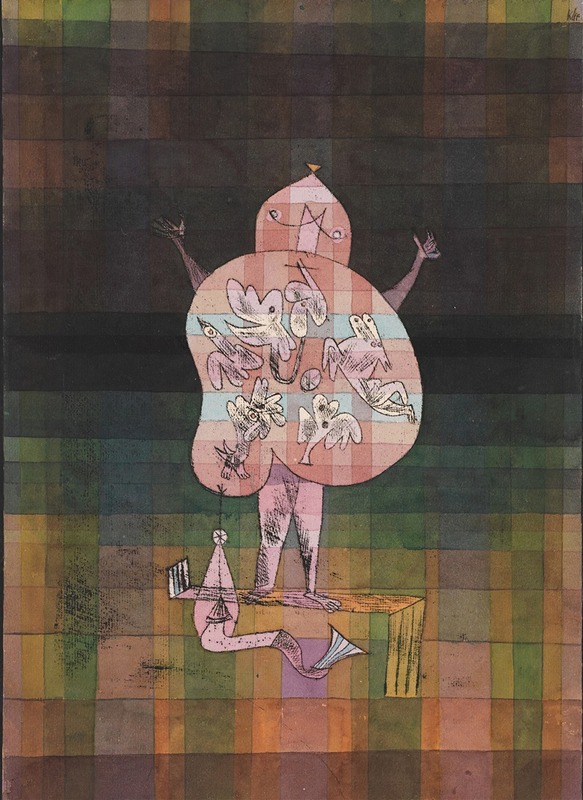
Ventriloquist and Crier in the Moor
A hand-painted replica of Paul Klee’s masterpiece Ventriloquist and Crier in the Moor, meticulously crafted by professional artists to capture the true essence of the original. Each piece is created with museum-quality canvas and rare mineral pigments, carefully painted by experienced artists with delicate brushstrokes and rich, layered colors to perfectly recreate the texture of the original artwork. Unlike machine-printed reproductions, this hand-painted version brings the painting to life, infused with the artist’s emotions and skill in every stroke. Whether for personal collection or home decoration, it instantly elevates the artistic atmosphere of any space.
"Ventriloquist and Crier in the Moor" is a painting by the Swiss-born artist Paul Klee, created in 1923. Klee was a pivotal figure in the development of modern art, known for his highly individual style that was influenced by movements such as Expressionism, Cubism, and Surrealism. His work often features a unique blend of abstraction and figuration, characterized by a playful use of color and form.
This particular painting, "Ventriloquist and Crier in the Moor," is an example of Klee's exploration of the interplay between line, color, and form. The painting is executed in oil on canvas, a medium that Klee frequently employed during this period. The composition is a complex arrangement of geometric shapes and abstract figures, rendered in a muted palette that includes earthy tones and subtle contrasts.
The title of the painting suggests a narrative or thematic element, which is a common feature in Klee's work. The "ventriloquist" and "crier" may be interpreted as symbolic figures, possibly representing aspects of communication or expression. The setting of a "moor" adds an element of mystery and ambiguity, as moors are often associated with isolation and introspection. However, Klee's work is known for its openness to interpretation, and the meaning of the painting is ultimately left to the viewer's imagination.
Klee's artistic philosophy was deeply influenced by his experiences as a teacher at the Bauhaus, a progressive art school in Germany where he taught from 1921 to 1931. During his time at the Bauhaus, Klee developed his theories on color and form, which he documented in his pedagogical sketchbook. These theories are evident in "Ventriloquist and Crier in the Moor," where the careful balance of color and form reflects Klee's interest in the underlying structures of art and nature.
The painting is also notable for its use of line, a fundamental element in Klee's work. The lines in "Ventriloquist and Crier in the Moor" are both structural and expressive, guiding the viewer's eye through the composition while also contributing to the overall mood of the piece. Klee's lines often suggest movement and rhythm, qualities that are enhanced by the dynamic arrangement of shapes and colors.
"Ventriloquist and Crier in the Moor" is housed in the collection of the Kunstmuseum Basel in Switzerland, which holds a significant number of works by Klee. The museum's collection provides insight into the breadth of Klee's artistic output, showcasing his development as an artist and his contributions to modern art.
Overall, "Ventriloquist and Crier in the Moor" exemplifies Paul Klee's innovative approach to painting, characterized by a synthesis of abstraction and figuration, a nuanced use of color, and a playful yet profound exploration of visual language. The painting remains an important work within Klee's oeuvre, reflecting his enduring influence on the trajectory of 20th-century art.





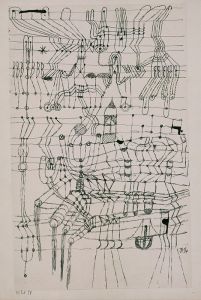
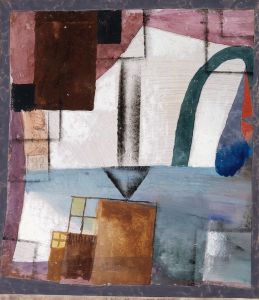
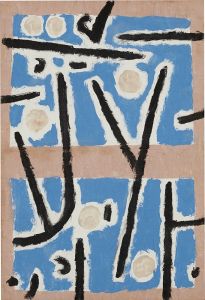
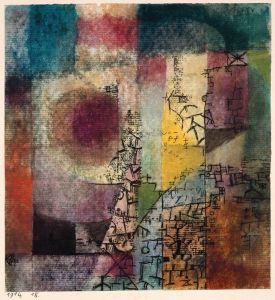
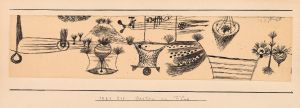
![The Harbinger of Autumn [green and violet gradation with orange accent]](/imgs/217154/s/paul-klee-the-harbinger-of-autumn-green-and-violet-gradation-with-orange-accent-295debda.jpg)
